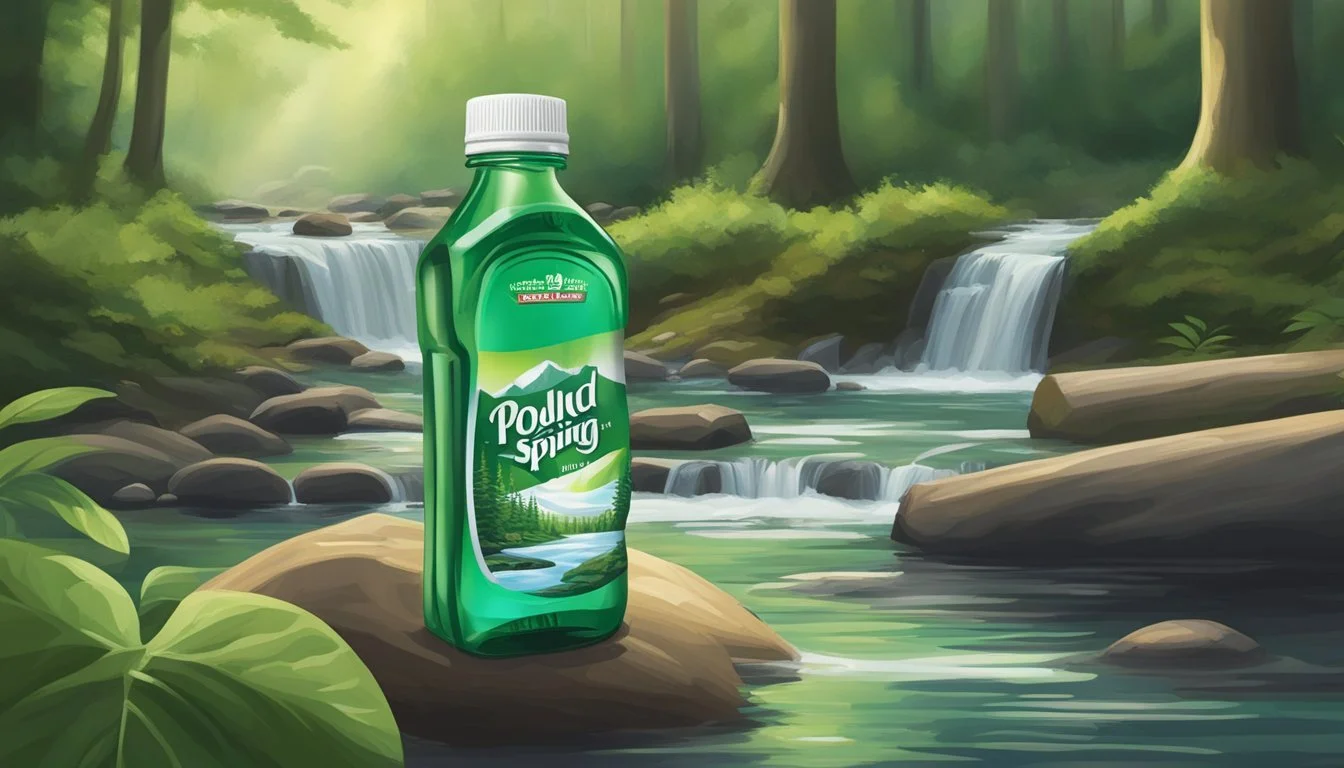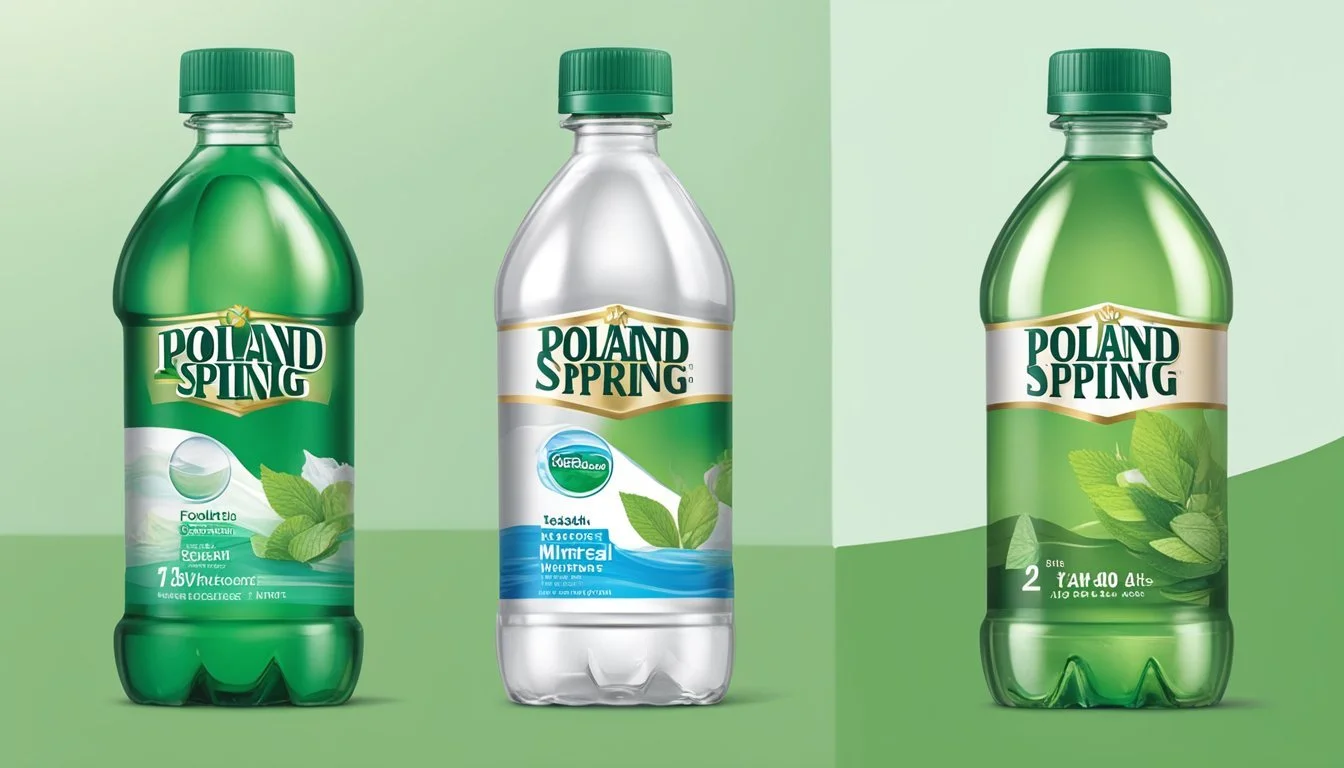Poland Spring vs. Flow
Which Bottled Water is Better? A Clear Comparison
Choosing the right bottled water can be a daunting task with so many options available. Among the popular choices, Poland Spring and Flow stand out due to their unique qualities and origins. Poland Spring, a well-established brand, sources its water from natural springs in Maine and adheres to stringent quality control standards. It is celebrated for its classic, crisp taste that has remained consistent over the years.
Flow, on the other hand, offers naturally alkaline spring water that is rich in essential minerals and packaged in eco-friendly cartons. This brand appeals to environmentally conscious consumers who appreciate sustainable practices without compromising on quality. Flow’s water is known for its smooth, refreshing taste that sets it apart from many other bottled waters on the market.
When comparing the two, the decision ultimately comes down to individual preferences regarding taste and packaging. While some may prefer the traditional taste and trusted quality of Poland Spring, others might lean towards Flow's commitment to sustainability and distinct mineral-rich flavor.
Understanding Bottled Water
Choosing the right bottled water involves understanding the different types available, their health benefits, and the overall market landscape.
Types of Bottled Water
Bottled water can be classified into several categories: spring water, mineral water, purified water, alkaline water, and carbonated water.
Spring Water: Sourced from natural springs, often reputed for its purity. Examples include Poland Spring and Evian.
Mineral Water: Contains natural minerals and electrolytes from underground sources, like Perrier and San Pellegrino.
Purified Water: Undergoes filtration and purification processes to remove impurities. Notable brands are Aquafina and Dasani.
Alkaline Water: Has a higher pH level, believed by some to neutralize body acidity. Essentia is a prominent brand.
Carbonated Water: Infused with carbon dioxide gas for fizziness, found in brands like La Croix.
Health Benefits and Considerations
Different types of bottled water offer varied health benefits and considerations.
Mineral Water provides essential minerals like calcium, magnesium, and potassium which are vital for bodily functions.
Purified Water ensures a consistent taste and quality by removing contaminants, making it a safe choice for those concerned about water quality.
Alkaline Water is often marketed for its potential to balance the body's pH levels, although more research is needed to confirm long-term benefits.
Spring Water, due to its natural sourcing, often contains vital nutrients but the quality can vary based on the source.
Consumers should read labels to understand the source and processing methods, especially for those with specific health concerns or dietary needs.
Bottled Water Market Overview
The bottled water market is vast and competitive, featuring a mix of major brands and niche players. Key brands like Nestlé Pure Life, Core Hydration, Evian, and Poland Spring dominate the landscape with strong distribution networks.
Consumers are increasingly interested in the origin, quality, and environmental impact of their bottled water choices. Brands compete by emphasizing purity, unique sourcing, and added health benefits.
Emerging trends include sustainability efforts such as recyclable packaging and reducing plastic usage, driven by growing environmental concerns.
The market's value continues to rise, with preferences shifting towards specialized waters like mineral and alkaline varieties, addressing both health and lifestyle needs.
Brand Histories and Origins
Poland Spring and Flow boast rich histories rooted in their places of origin. Poland Spring hails from Maine, while Flow is known for its eco-friendly approach.
Poland Spring: From Maine to Market
Poland Spring's history dates back to the 1800s. It originated from a natural spring in Poland, Maine, and has become one of the most recognized bottled water brands in the United States. The water source was initially discovered for its allegedly curative properties.
Poland Spring grew in popularity, transitioning from local distribution to a national brand. Its water is sourced from multiple springs in Maine, maintaining its natural purity.
Over the years, Poland Spring has seen several ownership changes but continues to emphasize the quality and purity of its water, making it a trusted household name.
Flow: The Rise of Eco-Conscious Water
Flow Alkaline Spring Water emerged from Verona, Virginia, and quickly distinguished itself with its sustainability efforts. It sources its water from a natural limestone-filtered spring, ensuring a high level of purity.
What sets Flow apart is its commitment to environmental sustainability. The brand uses eco-friendly packaging made from renewable resources, significantly reducing its environmental impact.
Flow not only focuses on providing high-quality alkaline water but also champions eco-conscious initiatives, making it appealing to environmentally aware consumers. Their attention to sustainable practices positions Flow as a leader in the bottled water market's eco-friendly sector.
Sourcing and Purification
When comparing Poland Spring and Flow bottled water, understanding their sourcing and purification methods is crucial.
Spring Water Sources and Collection
Poland Spring sources its water from natural springs in Maine. They emphasize the pristine quality of these groundwater sources, acknowledged for their natural purity and mineral content. Flow, alternatively, taps artesian springs primarily in Ontario, Canada.
The collection process for Poland Spring involves harnessing natural springs, ensuring minimal environmental disruption. Flow uses eco-friendly methods to extract water from deep underground aquifers.
Purity and Quality Standards
Poland Spring employs a meticulous purification process, including filtration and ultraviolet light treatment, to maintain water quality. This ensures the removal of contaminants and heavy metals, adhering to stringent purity standards. Poland Spring also follows EPA and FDA regulations to ensure safety.
Flow emphasizes its naturally alkaline water, which undergoes minimal processing to retain the natural minerals. The brand assures consumers of its water’s purity by conducting regular quality tests and adhering to safety and quality standards.
Adherence to Environmental and Health Regulations
Poland Spring and Flow are committed to environmental sustainability and health safety. Poland Spring uses BPA-free bottles to mitigate health risks associated with plastic consumption. They also follow strict EPA and FDA guidelines to ensure compliance with health regulations.
Flow stands out with its use of recyclable Tetrapak containers, reducing environmental impact. The company complies with International Bottled Water Association standards, promoting safe and eco-friendly water sourcing and packaging. This dedication highlights both brands' commitment to providing safe, high-quality bottled water with minimal environmental footprint.
Taste Profile and Mineral Content
Poland Spring and Flow offer distinct taste profiles influenced by their mineral content.
Taste Profile: Poland Spring is known for its clean and crisp taste. Its composition, primarily from natural spring water in Maine, offers a refreshing experience.
Flow provides a smooth taste, attributed to its unique sourcing. The water undergoes minimal processing, preserving the natural flavors.
Mineral Content
Mineral Poland Spring (mg/L) Flow (mg/L) Calcium 6.4 24.0 Magnesium 1.3 5.0 Total Dissolved Solids 40 300
Key Differences
Calcium and Magnesium: Flow contains higher levels of both calcium and magnesium than Poland Spring, impacting both the taste and health benefits.
Total Dissolved Solids (TDS): Flow has a higher TDS range, giving it a more pronounced mineral taste compared to Poland Spring's milder flavor.
The natural spring water origins of both brands contribute to their unique taste profiles and mineral content, catering to different preferences in bottled water.
Health Implications
Poland Spring and Flow offer different aspects regarding health. Each brand focuses on delivering purified water with added benefits.
Hydration and Health Benefits:
Both Poland Spring and Flow are excellent choices for staying hydrated. Poland Spring sources its water from springs in Maine, ensuring high-quality, refreshing hydration. Flow, on the other hand, offers alkaline spring water with a higher pH, which some claim may help balance body acidity.
Electrolytes:
Flow water contains natural electrolytes like calcium, magnesium, and potassium. These electrolytes help to replenish the body, making it a preferred choice for those who engage in physical activities. Poland Spring does not naturally possess these levels of electrolytes but is still effective for hydration.
Fluoride:
Poland Spring contains trace amounts of fluoride, which can contribute to dental health. Flow water is marketed as fluoride-free, appealing to consumers who prefer minimal fluoride intake.
PFAS Chemicals:
Poland Spring has faced some scrutiny regarding PFAS (Per- and Polyfluoroalkyl Substances), though it assures consumers that its water meets all safety standards. Flow also emphasizes that their water is free from PFAS chemicals, addressing current health concerns.
Potential Contaminants:
Both brands undergo rigorous testing to ensure purity and safety. Poland Spring utilizes third-party testing to meet FDA and EPA requirements. Flow adopts similarly stringent processes to ensure its water remains free of harmful contaminants.
Legal Limits:
All bottled water sold in the United States, including Poland Spring and Flow, must comply with the FDA's legal limits for contaminants. Both brands clearly indicate their commitment to these regulatory standards.
These aspects of hydration, health benefits, electrolytes, fluoride, PFAS chemicals, potential contaminants, and adherence to legal limits play crucial roles in evaluating the health implications of Poland Spring and Flow bottled water.
Packaging and Environmental Concerns
Poland Spring uses PET plastic bottles for its products. PET plastic is lightweight and recyclable, which aids in minimizing environmental impact. However, concerns have been raised about the presence of microplastics and harmful chemicals like phthalates in their bottles.
Flow water is packaged in Tetra Pak cartons, a paper-based product. Tetra Pak is more sustainable than plastic, being fully recyclable and sourced from renewable materials. It also features a lower carbon footprint compared to traditional PET plastic.
Poland Spring: PET plastic bottles, potential for microplastics, recyclable
Flow: Tetra Pak cartons, renewable materials, lower carbon footprint
Sustainability efforts from both brands differ. Poland Spring has made strides in reducing plastic use by incorporating recycled plastic in their bottles. They also engage in initiatives to encourage recycling among consumers. Flow adheres to sustainability practices with its environmentally-friendly packaging, aiming to minimize waste and promote renewable resources.
BPA-Free considerations are vital for consumers. Poland Spring ensures that their bottles are BPA-free, important for health-conscious consumers. Flow also maintains BPA-free packaging due to the nature of its paper-based cartons.
In assessing bottled water companies' environmental impact, factors such as packaging material, recyclability, and the overall carbon footprint are key. Both Poland Spring and Flow make efforts to reduce their environmental impact through different packaging strategies, each with its own benefits and challenges.
Consumer Experience
Consumers hold varied opinions on Poland Spring and Flow, looking at factors like taste, quality, and cost. Their experiences drive brand loyalty and perceptions of value-for-money.
User Feedback and Brand Loyalty
Poland Spring users often praise the brand for its consistent taste and high quality. Many appreciate its crisp, refreshing nature, which makes it a reliable choice. The brand's rich history and transparent sourcing further bolster consumer trust. On the contrary, some users criticize Poland Spring for the perceived environmental impact due to its plastic bottling.
Flow stands out with its eco-friendly packaging and high pH level. Users often rave about its slightly alkaline taste and the Tetra Pak container that minimizes a plastic footprint. This modern approach attracts eco-conscious consumers, fostering loyalty. However, some may find Flow's taste unique—slightly different from traditional bottled water—leading to mixed reviews.
Comparison of Cost Versus Quality
Poland Spring is generally priced lower than premium brands, appealing to budget-conscious buyers who don't want to compromise on quality. Despite the lower price, Poland Spring maintains a consistent and crisp taste, making it a popular choice for everyday hydration.
Flow typically commands a higher price due to its unique packaging and focus on higher pH levels, indicating potentially better hydration and health benefits. The quality of Flow, combined with its eco-friendly packaging, often justifies the cost for those prioritizing sustainability and health. Consumers willing to pay a bit extra value the premium experience and the brand's commitment to environmental responsibility.
Final Assessment
When comparing Poland Spring and Flow, several factors come into play.
Quality:
Poland Spring is known for its consistent quality, meeting FDA and EPA standards.
Flow offers premium quality with natural alkaline water, free from artificial additives.
Taste:
Poland Spring has a neutral taste, appreciated for its crisp and clean finish.
Flow provides a slightly sweet taste due to its naturally occurring minerals and electrolytes.
Environmental Impact:
Poland Spring, despite quality claims, has faced criticism over its source sustainability.
Flow distinguishes itself with eco-friendly packaging using Tetra Pak, which is 100% recyclable and made from renewable resources.
Healthful:
Poland Spring adheres to rigorous standards ensuring safe consumption.
Flow emphasizes its alkaline pH level, which some believe offers added health benefits.
Natural Composition:
Poland Spring sources its water from various springs, maintaining natural mineral content.
Flow is sourced from a protected artesian spring, ensuring a pure and balanced mineral profile.
Both brands provide high-quality bottled water, though they appeal to slightly different consumer preferences.
More About Poland Spring
Acqua Panna vs Poland Spring: Which Bottled Water is Better?
Boxed Water vs Poland Spring: Which Bottled Water is Better?
Core Hydration vs Poland Spring: Which Bottled Water is Better?
Ice Mountain vs Poland Spring: Which Bottled Water is Better?
Icelandic Glacial vs Poland Spring: Which Bottled Water is Better?
Mountain Valley Spring Water vs Poland Spring: Which Bottled Water is Better?
Nestle Pure Life vs Poland Spring: Which Bottled Water is Better?
Poland Spring vs Aqua Carpatica: Which Bottled Water is Better?
Poland Spring vs Cascade Mountain: Which Bottled Water is Better?
Poland Spring vs Castle Rock: Which Bottled Water is Better?
Poland Spring vs Crystal Geyser: Which Bottled Water is Better?
Poland Spring vs Crystal Lake: Which Bottled Water is Better?
Poland Spring vs Essence pH10: Which Bottled Water is Better?
Poland Spring vs Hawaii Volcanic: Which Bottled Water is Better?
Poland Spring vs Hawaiian Springs: Which Bottled Water is Better?
Poland Spring vs Kirkland Signature: Which Bottled Water is Better?
Poland Spring vs Liquid Death: Which Bottled Water is Better?
Poland Spring vs Proud Source: Which Bottled Water is Better?
Poland Spring vs Purely Sedona: Which Bottled Water is Better?
Poland Spring vs Richard's Rainwater: Which Bottled Water is Better?
Poland Spring vs San Pellegrino: Which Bottled Water is Better?
Poland Spring vs Simple Truth: Which Bottled Water is Better?
Poland Spring vs Solan de Cabras: Which Bottled Water is Better?
Poland Spring vs Talking Rain AQA: Which Bottled Water is Better?
Poland Spring vs Weird Water: Which Bottled Water is Better?
Poland Spring vs Whole Foods 365: Which Bottled Water is Better?
Poland Spring vs Whole Foods Italian Still Mineral water: Which Bottled Water is Better?
Poland Spring vs Zephyrhills: Which Bottled Water is Better?








